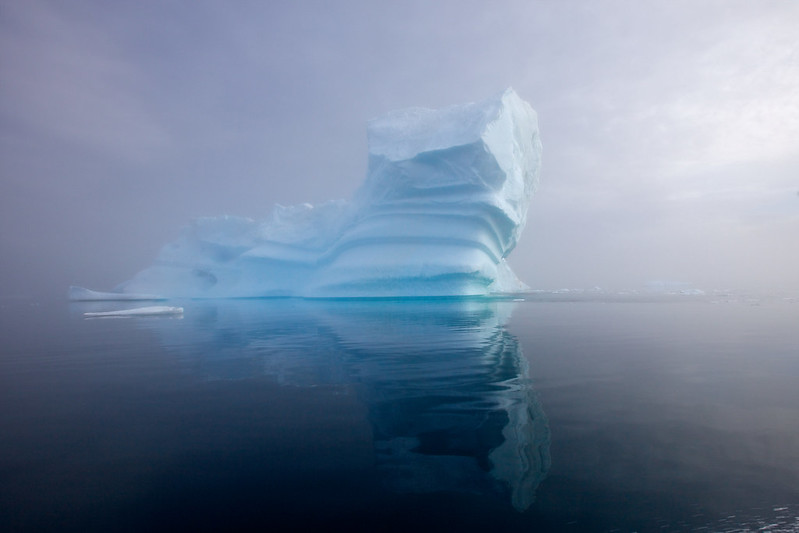And now the sea is flat. Baby waves noiselessly caress the shore. They look like nothing to a traveler from afar. But to a local hunter they are a sure sign that a big storm is again on its way to Etah.
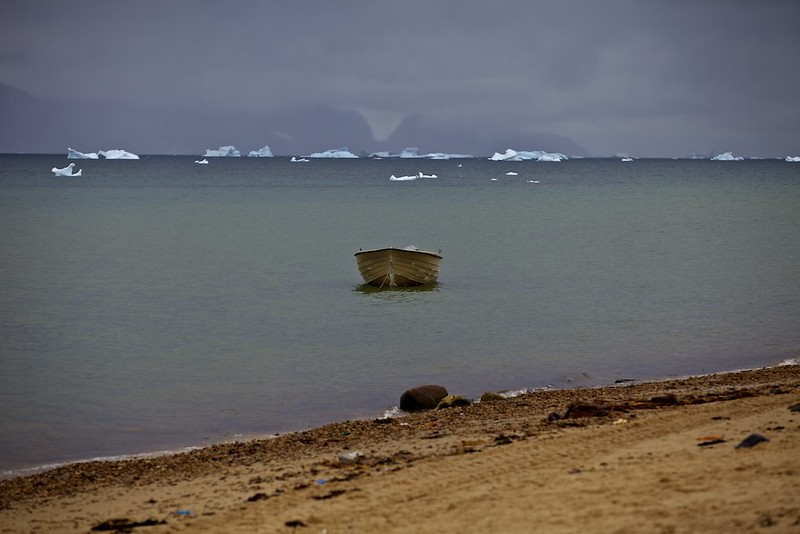
When we were caught by bad weather in Neqip Akia on a beautiful sunny afternoon, the storm also came “out of nowhere.” The emerald land turned black, and the sapphire bergs turned into a skyline of grey frightening fortresses ready for war. Everything changed in a moment. But that’s what happens in Avannaa. Here you can’t assume. You can’t have expectations. You can’t really plan, because a plan has been already made for you.
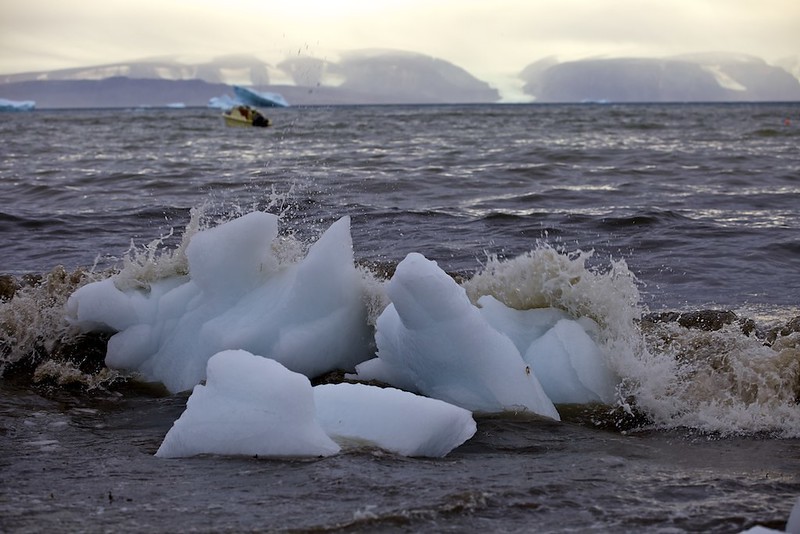
The 6 day long storm has severely beaten our boat and damaged our bodies, but that is nothing to us: we know that we have been lucky again. As we are trying to repair the mechanics and heal our wounds on shore, I will use this moment of “doing-nothing” (or what it may seem to be from aside) to tell you more about the great town of Qaanaaq.
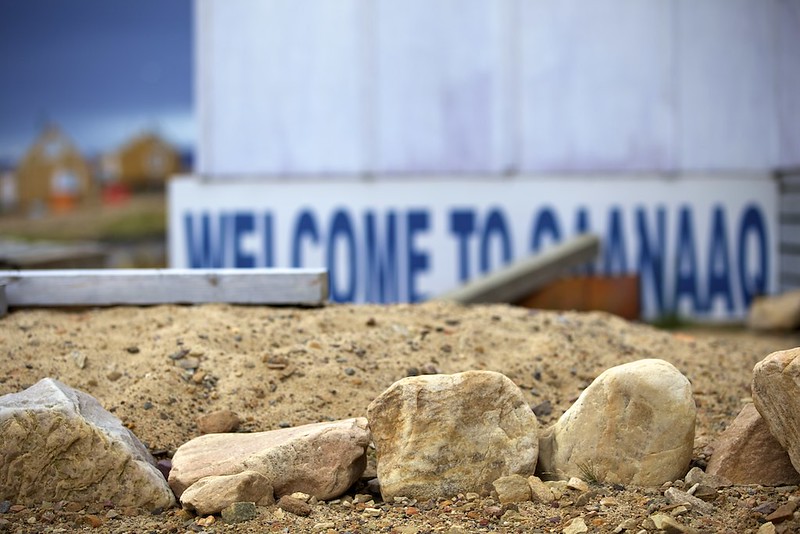
Greenland is changing today, and I am sometimes surprised that despite all odds it still has a place like Qaanaaq. Here one can still see love and mutual assistance; they actually still live here. Like in the old days before “Progress”, people come out and help without asking for anything in return. The community, like in the old days, still matters. Take a look at our boat: it is getting a helping hand from so many people all at once!
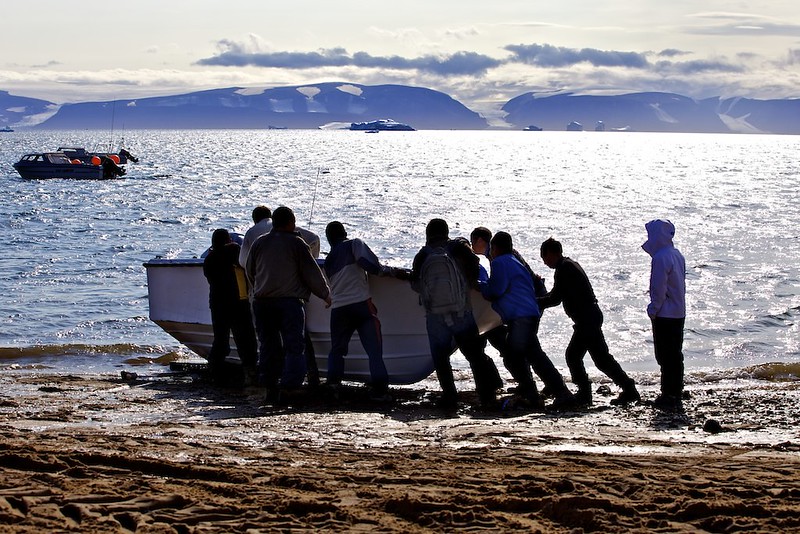
Greenland has many faces today, but Qaanaaq may be the one that represents it best. Not too many people outside of Greenland know this face. I wish more would. Spend a summer in Qaanaaq and you will go through a personal transformation after which you will never be the same.

Just a few days ago when we almost lost our boat again due to the bad weather, Tuku Oshima, the daughter of a great Japanese polar explorer who 40 years ago went on an expedition and instead chose to settle down in Siorapaluk and become a hunter, spotted us from her window.
She was watching us for a while before she came out and saved us. Tuku is a great hunter – maybe the only female great hunter in the region. Tuku is stronger than any man I know in person. If she wanted she could literally lift up our tiny boat with all of us inside and carry all of us on her shoulders to a safer spot – or at least that’s how it feels. But don’t mess up with Tuku – you will be injured or dead.

By the way, I forgot to mention that Tuku not only is a great hunter, but also an electrician, a researcher and a writer. Here is her newest book, The Meaning of Ice, although it is not released yet; look for it in the stores maybe a year from now. In The Meaning of Ice she talks about the peculiarities of ice and I can assure you that she is the best connossieur of it.

So, such is Tuku. And then there Inge Qaavigaq. Every time I run up or down Qaanaaq’s Broadway she is always there, at her “Arctic Café” – a hot spot one can’t miss. Confined to her wheelchair in Qaanaaq, she emanates more joy of life than any person I know in my highrise on Upper East Side in New York. She knows how to celebrate her day, and there is place in her big heart for everyone – including such a hopeless person as myself. But in the country of understatements she will never accept this type of a compliment. Instead, she would just shout, “Come you, come and have some coffee!” And her coffee, I swear, is the best!

So, we have so many friends here. We spend our hours walking from home to home and socializing. After a week of hunger and thirst we are lucky again to have all the pleasures of life.
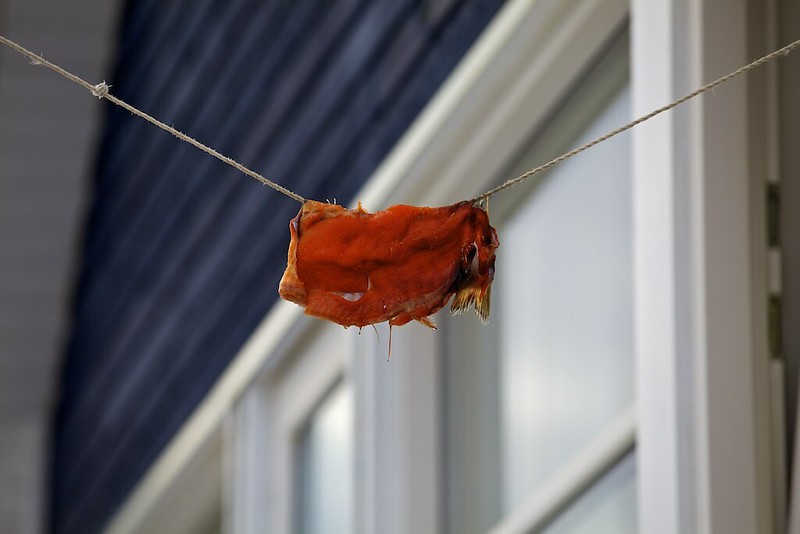
And the eternal polar day gives us all the time we need. One feast is not over yet, but another kaffemik is awaiting for us just around the corner.
And kaffemiks in Qaanaaq are not just any tea party. A kaffemik in Qaanaaq is always a journey into the past.
Qaannaq a place where so many famous expeditions have started and where they have returned after a success or a failure. But of course, the border between a success and a failure in Avannaa is so permeable. In these days I am thinking constantly of Admiral Robert Peary: about his so many failed attempts to reach the North Pole and about his eight amputated toes that he lost on the way to Qalaserssuaq. He had the highest commitment, but also – very importantly - the highest tolerance for failure.
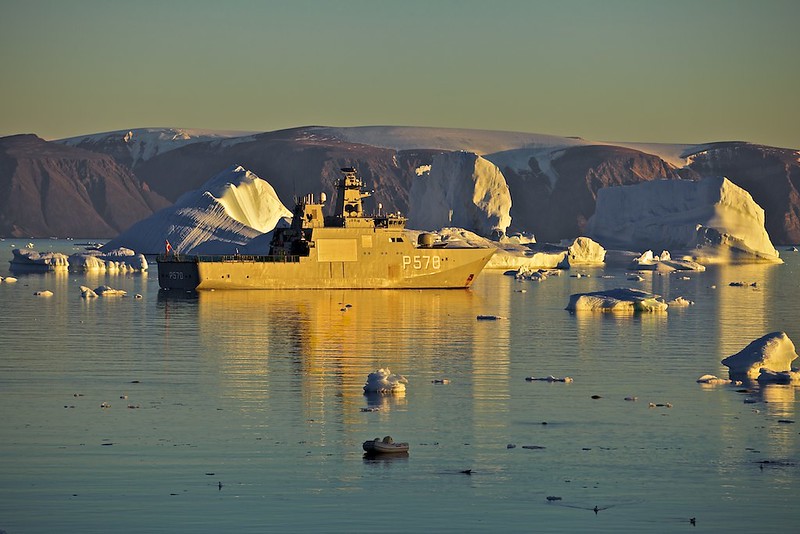
I could only compare Peary’s failed attempts to reach Qalaserssuaq (Big Navel) to the Mars Ranger missions’ attempts to land on the Martian landscape. There were also 7. On the Avannaa Expedition we faced a much simplier, but in a way a similar mission. And yes, we too failed so many times. But the secret is to tolerate the failure and to keep going despite all odds.
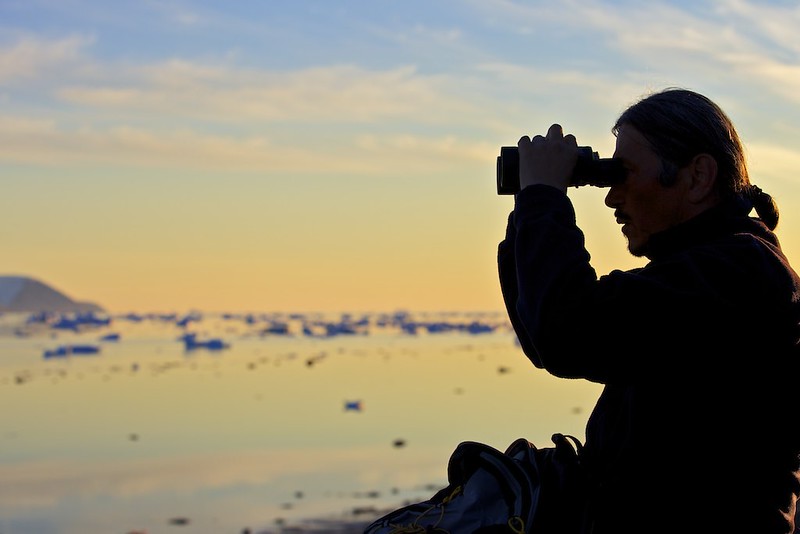
Qaanaaq is a place of great proud history that is - unlike in so many other places - still alive. Qaanaaq may be one of very few places on Earth where the Pearies and the Hensons still talk to each other. Actually, you can see this happening every single day in Pillersuisoq (local store) while you are standing in line to get the groceries.
Peary got a son in 1906 here and Henson did too. Left behind by their fathers, two half-Eskimo boys grew up, turned into the great hunters, established the families that eventually intermarried.

We were lucky to spend much time with Anaukaq’s (Mathew Henson’s and Akatingwah’s son) children and grandchildren who still live in Qaanaaq. In 1906 Matthew Henson left Greenland and his Eskimo family behind. He never saw them gain. After Henson returned to New York, he married a girl named Lucy Ross. They lived together for 49 years, but had no children. So, Qaanaaq may be one of the very few places where one can find “real” Hensons.
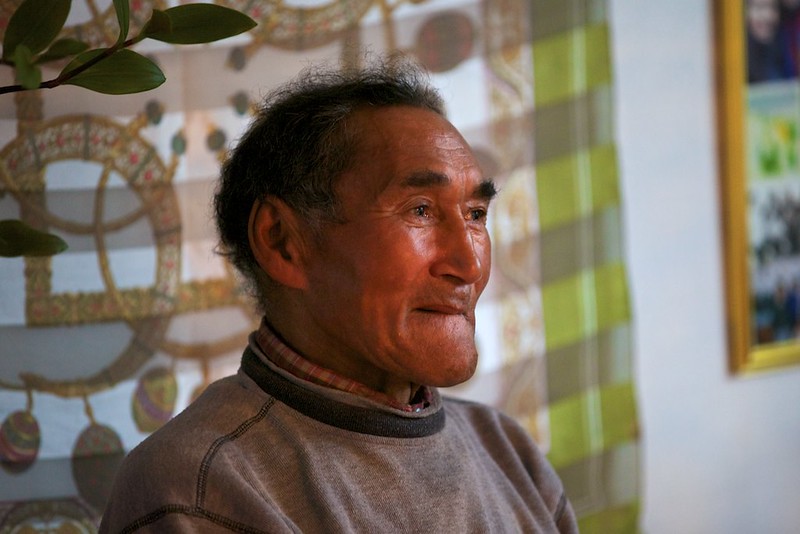
And then, there is Peary’s family. Peary and Ahlikahsingwah had two sons, Anaukaq and Kale. In 1950 Jean Malaurie reported about Kale's existence to the outside world. Left by his father in 1909 Kale was brought up by several step-fathers who taught him about ancient ways of life. Kale had several sons and daughters, Paulina being the oldest.

I was lucky to have several talks with her and with the grandson Aleqatsiaq (Peter) Peary.

Peter’s father and Paulina’s son, Robert Peary Jr. has been a good friend of ours; we went with him on a few ice trips in Uummannaq Bay. Excellent drum-singer and storyteller, Robert, or Hivshu Ua how he calls himself now, does a lot to save the old Avannaa traditions, language and culture.
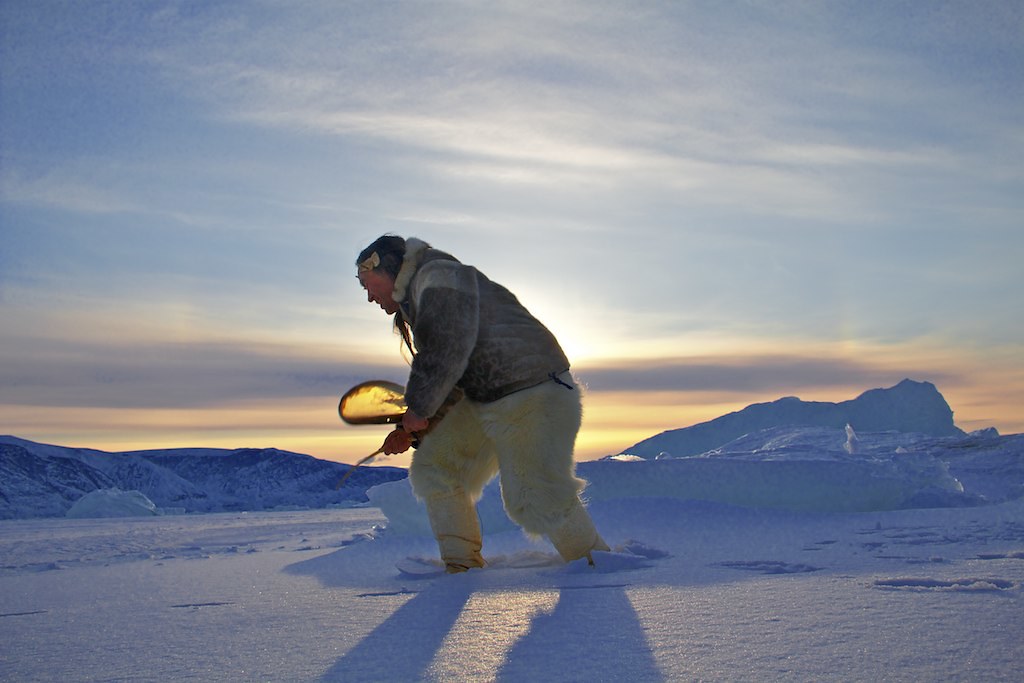
Paulina who will turn 78 in a month lives in this humble house. Some 65 years ago she used to live in Uummannaq, Thule, with her father Kale. By the age of 10 she was an experienced dog-sledder. In those days it was not really customary for women to drive the dogs, but she was the oldest among her father’s children while his son was still too young.
When she turned 13, and had to go for confirmation, her father asked her to have her own dog team. Pauline was crying: “Father, but women don’t do it!” But he told her that she had to carry meat for the people who were hungry. He said it was not good to be hungry. “When I arrived for my confirmation I was very ashamed, says Paulina.- I was a woman on dog sled by myself! But then we stopped by every house and gave people meat. This was a happy moment. And by Christmas I received more presents than I ever did before.”
And this is Qulutanguaq – the old man in the “Old People’s Home” – a hunter and a drumdancer and maybe the oldest man in Qaanaaq. He recently turned 90. Qulutanguaq still drums and watches life outside of the “Old People’s Home” through his binoculars that are always ready at his window.

We roam from room to room in the “Old People’s Home” and we meet more and more people who still remember how the life was before the arrival of the “Progress” and “Civilization”.
And finally, comes Uusaqqaq Qujaakitsoq – the big grand man of Qaanaaq.
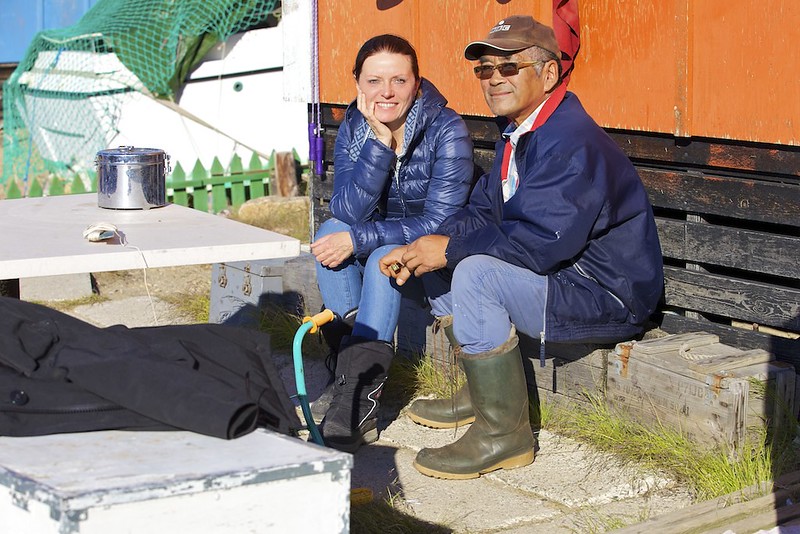
One could write a book about him, or two, but for now I will just say a word about his great film “Aulahuliat” which literally means “moving images”.
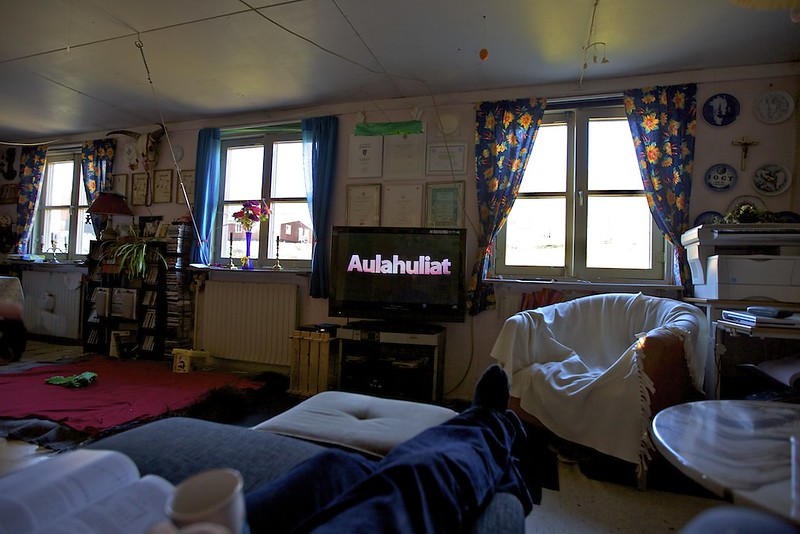
Uusaqqaq started to shoot when he was only 15 – that’s when he got his first camera – and eventually was able to document the tragic history of displacement of people of Uummannaq, Thule from their homeland in Uummannaq to Qaanaaq when the American military had chosen Uummannaq as the site for the Thule Air Force Base and a Ballistic Missile Early Warning radar in 1951. “Aulahuliat” is a rare film and may be the best film about Avanersuaq that I have ever watched in my life.
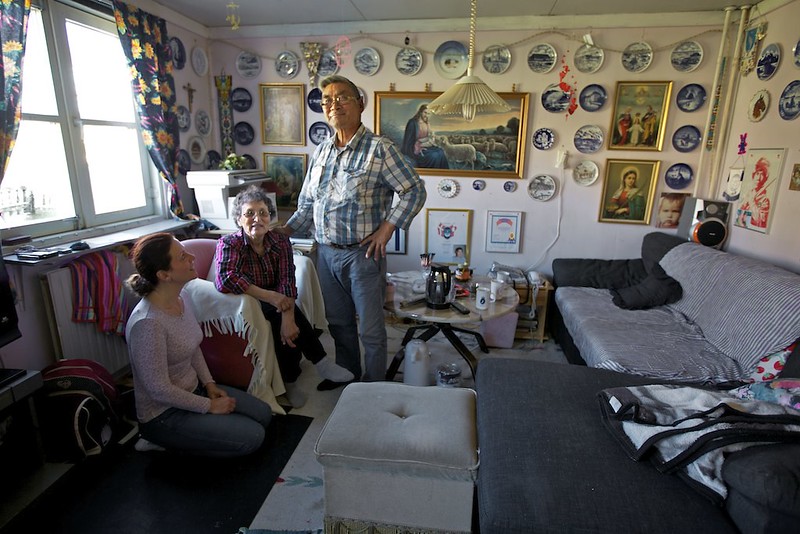
In other words, Qaanaaq is a storytelling place. Even rocks here will tell you their story. “Ujarak” means “a stone” in Kalaallisut. And then there is “Ujarappassuit “ which means “lots of stones”. And then there is “Ujarapparparparparsuit” which means “lots, and lots, and lots, a whole universe of stones”. And a “Qerrut” is a “Rockfall”! So, you can imagine how many stories there are here, and each one is worthwhile to be told. And this is what really Qaanaaq is about.
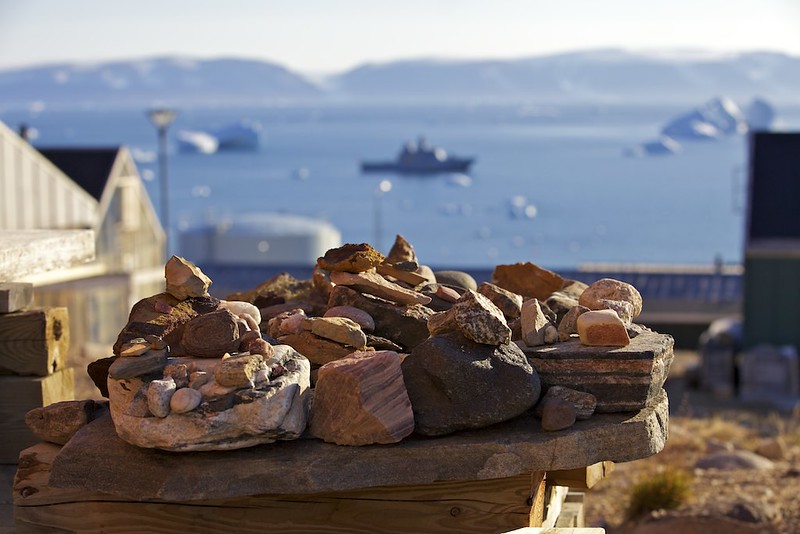





























 So, even though Qaanaaq’s “Broadway” may seem to be
completely empty at this time of a night, we know that we have been already
noticed by our friends and soon they
will show up to give us a warm welcome
back.
So, even though Qaanaaq’s “Broadway” may seem to be
completely empty at this time of a night, we know that we have been already
noticed by our friends and soon they
will show up to give us a warm welcome
back.












.jpg)







